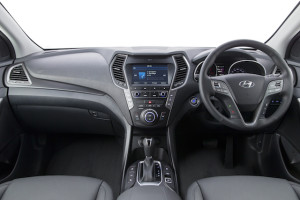
Public reaction to the ‘Get Lost’ television advertisement for Hyundai’s Tucson SUV has been mixed.
“Some people have said we will win the worst ad of the year; some that we will win the best ad,” said Hyundai NZ general manager Andy Sinclair. “The ideal outcome would be to win both.”
The love/hate double has been done before: remember the ‘Goldstein’ ads for the ASB?
The ‘Get Lost’ ad was filmed by Hyundai’s agency over four days on a drive from the bottom of the South Island to the top of the North. All along the way the young girl, around which the ad is based, keeps telling her driver ‘dad’ to get lost.

The underlying message of course links the Tucson with freedom and adventure. A bit like the Hyundai ad of a few years ago where a boy still in nappies straps a surfboard on the roof of the Santa Fe SUV, picks up his nappy-clad girlfriend and heads to the beach.
Some people loved it; some didn’t. The Australian advertising standards people certainly didn’t – they banned it from TV screens. It was irresponsible, they said. Nappy-clad kids can’t drive – what was Hyundai thinking, they said.
But the ‘Get Lost’ Tucson ad, like the Santa Fe surfboard ad before it, has done what it was designed to do: sell the product. “Tucson is racing out the (sales) door,” said Sinclair.
In real life the girl is called Kayla and lives north of Auckland. Her mum died five years ago and her dad looks after her and her two sisters. Hyundai’s ad people stumbled upon them. “She has never acted before,” said Sinclair. Kayla’s story is on Hyundai’s Facebook page.
What ad campaign Hyundai is planning for Tucson’s big brother the Santa Fe doesn’t matter much because it has pretty much always sold itself. The new-look Santa Fe (pictured at top) arrived in New Zealand this week.
Much of Hyundai’s success in this country, especially its move into the fringes of the premium sector, has centered around the Santa Fe, both five- and seven-seat variants.

The updated model gets styling changes front and rear and arrives kitted out with passive and active electronic safety stuff passed down from the $100,000 Genesis luxury sedan. Chief among the gizmos is autonomous braking, where sensors warn of an impending collision and tell the brakes to quickly stop the car.
The system is nothing new in the motoring world, but Hyundai’s parameters are. Hyundai’s technical trainer Bevan Redpath has tried them, driving in a controlled traffic flow without touching the brakes.
“It’s scary – but it works at under 80km/h,” he said. “Above 80km/h it will be very hard to prevent a collision.” The 80km/h parameter is impressive – many rival systems work only up to 30-40km/h.
The complete package of aids is not available in every Santa Fe, only in the Elite Ltd. “We have to balance the technical aids with the price of the vehicle that people are prepared to pay,” said Sinclair.

Whatever the money, people are moving out of sedans and station wagons and into SUVs. “The migration continues,” said Sinclair. “SUVs will overtake sedans and wagons in the next few years. Even companies are going into SUVs on the strength of demand from their drivers.”
There are eight facelifted Santa Fe models, four diesel and four petrol, each with a Euro5 emissions rating and priced between $58,990 and $81,990. Seven of the eight are all-wheel-drive (AWD).
The range offers two petrol units, a four-cylinder 2.4-litre delivering 138kW/241Nm and a 3.3-litre V6 good for 199kW/318Nm. The 2.4-litre unit powers three AWD variants and the 3.3-litre runs the solitary front-drive model.
The four AWD diesel models use a four-cylinder 2.2-litre unit generating 147kW/440Nm. The diesels have been the best sellers, but the launch of the new-look range this week showed up the entry-level 2.4-litre Theta engine as a smart choice.
The drive route was one of the best ever, taking in good and bad sealed roads, many kilometres of twisting loose metal surfaces, and steep grassy paddocks on a beef and sheep farm at Port Waikato.
The 2.4-litre petrol unit and the standard six-speed automatic gearbox is an especially tidy drivetrain. The stint on road tyres over the farm, with the AWD locked and directing drive 50:50 front/rear, showed that a good gearbox always makes up for modest power and torque.
